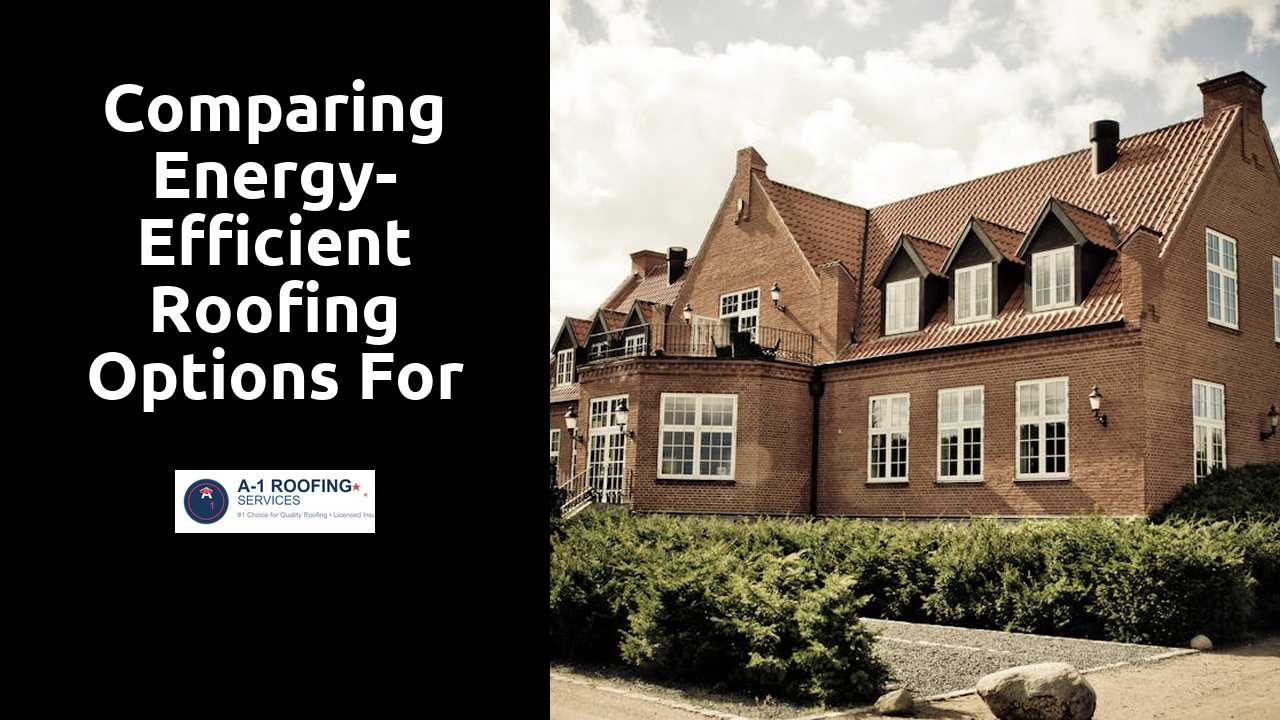
Comparing Energy-Efficient Roofing Options for Your Home
Table Of Contents
Green Roofing
Living roofs, often referred to as green roofs, integrate vegetation directly into the roofing system. They consist of layers that support plant growth, creating a natural habitat while providing insulation for the building. This greenery can help reduce rainwater runoff by absorbing excess water, improving stormwater management. Additionally, these systems can enhance urban biodiversity by providing habitats for various birds and insects, contributing to a healthier ecosystem.
The installation of green roofing can significantly improve energy efficiency. By providing an extra layer of insulation, living roofs help regulate indoor temperatures, which can reduce reliance on heating and cooling systems. This insulation effect may lead to lower energy bills over time. Furthermore, the thermal mass of the soil and plants absorbs sunlight during the day and releases it slowly, creating a more stable microclimate for the building. Overall, the benefits extend beyond energy savings to enhance the aesthetic appeal of homes.
Continue reading this article for more information.
The Environmental Advantages of Living Roofs
Living roofs, often referred to as green roofs, provide a range of environmental benefits that contribute positively to urban ecosystems. These installations support biodiversity by creating habitats for birds, insects, and other wildlife. The vegetation helps filter air pollutants and enhances overall air quality, which is essential in densely populated areas. Additionally, the presence of plant life plays a crucial role in reducing the urban heat island effect by lowering surrounding temperatures.
Moreover, living roofs are effective in managing stormwater runoff. The layers of soil and plants absorb rainwater, which minimizes the risk of flooding and helps in groundwater replenishment. This natural absorption process reduces the burden on city drainage systems, especially during heavy rainfall. Overall, integrating living roofs into urban architecture not only beautifies spaces but also enhances environmental sustainability.
Reflective Roofing
Reflective roofing involves materials designed to reflect solar radiation rather than absorb it. This ability to bounce back sunlight helps keep homes cooler, leading to reduced reliance on air conditioning during hot months. Such roofing systems often feature lighter colors or special coatings that significantly decrease heat absorption. As a result, homeowners can experience lower energy bills, creating both financial and environmental benefits.
The variety of reflective roofing options available makes it easy to find a suitable system for different architectural styles. Metal roofs, membrane systems, and reflective asphalt shingles are among the most popular choices. Each type offers unique advantages, such as durability, aesthetic appeal, and ease of installation. When considering a reflective roofing solution, selecting materials that align with local climate conditions can enhance overall efficiency and performance.
How Reflective Coatings Minimize Heat Absorption
Reflective coatings are designed to enhance the roofing system's ability to reflect sunlight rather than absorb it. These coatings often contain special materials that increase the surface's reflectivity, resulting in lower temperatures on the roof surface. When sunlight hits the roof, much of it is redirected away, decreasing the amount of heat that penetrates into the building. This not only helps maintain a more comfortable indoor environment but also reduces the reliance on air conditioning during the warmer months.
Furthermore, the energy savings from reflective roofing can be significant. By keeping the roof cooler, these coatings minimize the heat transfer into living spaces, leading to lower energy consumption and reduced utility bills. The benefits extend beyond immediate energy efficiency, contributing to a longer lifespan for the roofing materials. A cooler roof is less prone to thermal stress and subsequent damage, making reflective coatings an investment in both immediate savings and long-term durability.
Installation Considerations
When considering the installation of energy-efficient roofing, selecting a qualified contractor is crucial. A professional with experience in eco-friendly materials can provide valuable insights on the best options for your specific needs. Look for contractors who are certified in green roofing practices. They should also have a portfolio of past projects demonstrating their expertise.
Additionally, reviewing warranties and product specifications is essential before committing. Each type of energy-efficient roofing system has its own installation requirements and maintenance needs. Understanding these can help ensure the longevity and performance of your new roof. Discuss any concerns you may have with your contractor to make informed decisions that align with your home’s energy efficiency goals.
Choosing the Right Contractor for Energy-Efficient Roofs
Finding a contractor with experience in energy-efficient roofing solutions is essential for ensuring a high-quality installation. Begin by researching local companies that specialize in green or reflective roofing. Look for qualifications, certifications, and positive customer reviews. A reputable contractor will also provide information on past projects and may be willing to share testimonials from satisfied clients. Asking for references can further reassure you of their competency in handling energy-efficient installations.
It is also important to discuss details upfront before finalizing your choice. Ensure the contractor provides a comprehensive estimate, including both materials and labor costs. Inquire about their familiarity with the specific energy-efficient roofing options you are considering. Communication is key; a good contractor will be transparent about the process, timeline, and any potential challenges. This level of engagement can help build a strong working relationship focused on achieving the best results for your home.
Related Links
Energy Star Ratings: What to Look for in Roofing ProductsThe Role of Roof Overhangs in Energy Efficiency